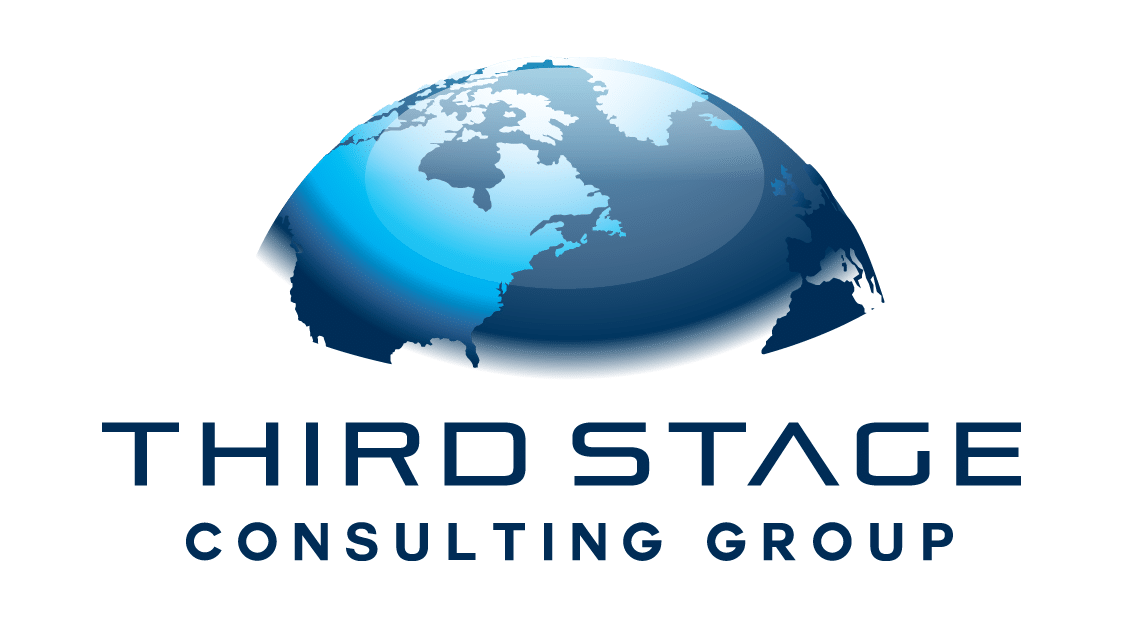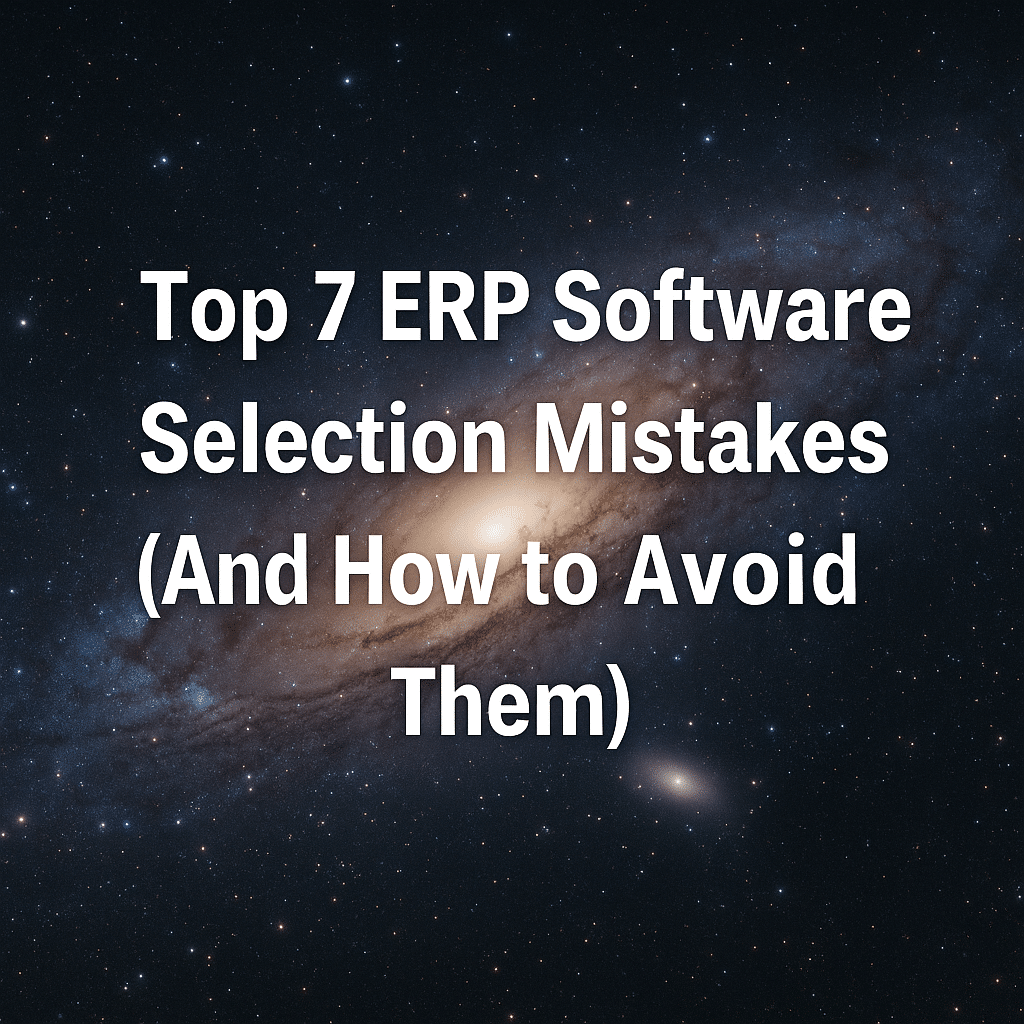By Eric Kimberling, CEO of Third Stage Consulting
When it comes to ERP software, companies often think the biggest risk is choosing the wrong system. But in reality? The bigger danger is picking the right software — and then failing in how you select, implement, and integrate it.
After working with hundreds of organizations across industries, I’ve seen the same ERP selection mistakes repeat themselves time and time again. Whether you’re a mid-market manufacturer or a billion-dollar distributor, these patterns hold true.
In this blog, I’ll break down the seven most common ERP selection mistakes — and how you can avoid them by taking a more thoughtful, strategic, and independent approach to your transformation.
Table of Contents
ToggleMistake #1: Failing to Plan for Implementation Early
One of the most dangerous assumptions companies make is thinking ERP selection ends once you sign a contract.
Wrong.
ERP isn’t just a software purchase — it’s a business transformation. And that means your planning shouldn’t stop at which vendor you choose. In fact, the real work starts before the contract is signed.
What many organizations miss is this: the implementation approach should influence which system you select in the first place. For example, if you need a phased rollout due to resource constraints, some systems (and implementers) are better suited for that than others.
I always advise clients to develop a detailed implementation plan during the selection phase — one that includes:
- Change management strategy
- Data migration plan
- Resourcing requirements (internal and external)
- Integration architecture
- Timeline and phasing approach
- Training and user enablement
Don’t just ask what the software can do. Ask how you’re going to implement it successfully.
Mistake #2: Vague Requirements and Unstructured Demos
Let me be blunt here: vague requirements produce vague demos.
Too often, companies send out RFPs with high-level checklists, hoping to learn what a system could do. But without clearly defined business needs, those demos become generic sales presentations — not decision-making tools.
Instead, you need to take the time to define your business processes, pain points, and desired future state. Then structure vendor demos around those real-life scenarios.
We always coach clients to give vendors scripted demo scenarios:
- “Show us how your system handles a multi-step BOM change for make-to-order.”
- “Demonstrate how you would manage landed cost tracking across multiple warehouses.”
- “Walk through a return-to-vendor workflow with inventory reconciliation.”
By making vendors show their system in your world, you’ll cut through the sales fluff and see what really fits.
Mistake #3: Evaluation Fatigue from Too Many Vendors
I’ve seen companies evaluate 10+ ERP vendors at once — and by the end, nobody remembers who did what. Everything starts to blur. Your team is burned out, disengaged, and just wants the process to be over.
That’s not how smart decisions are made.
Keep your shortlist short. I recommend evaluating 3–4 solid contenders based on your size, industry, and goals. Run initial mini-demos with a core evaluation team. Once you’ve narrowed it to 1–2 finalists, bring in broader stakeholders to vet specific concerns.
This helps avoid burnout and ensures you’re evaluating each system with fresh eyes and a focused mind.
Pro tip: Don’t over-democratize too early. Keep your process tight and strategic until you’re confident you’ve got real contenders.
Mistake #4: Ignoring the Implementation Team
You’re not just buying software — you’re buying a team of people to help you implement it.
And here’s what most companies miss: the quality of that implementation team is just as important — if not more important — than the software itself.
I’ve seen companies choose the right ERP and still fail because the implementer:
- Didn’t understand their industry
- Wasn’t available when needed
- Had high turnover
- Lacked experience in similar transformations
During selection, you should be evaluating the people behind the pitch — not just the tech. Ask:
- Who will be on our project? Can we interview them?
- Have they worked in our industry before?
- What is their methodology and change management approach?
Choosing a great ERP system but partnering with the wrong implementation team is like buying a Ferrari and letting someone else drive it off a cliff.
Mistake #5: Underestimating Total Cost and Timeline
Every vendor pitch is optimistic. Timelines are tight. Budgets are “all inclusive.” But in reality? ERP projects almost always take longer and cost more than expected — not because of bad intentions, but because of hidden complexities.
Don’t just ask what the licensing fees are. Build a full Total Cost of Ownership (TCO) that includes:
- Internal resource time
- Data cleansing and migration
- Integration development
- Change management and training
- Post-go-live support
- Contingency buffer (trust me, you’ll need it)
When clients tell me their ERP project ran over budget, it’s almost always because they forgot to account for internal costs or third-party add-ons.
Rule of thumb: Whatever the vendor quotes, add 30–50% as contingency — especially if this is your first major ERP.
Mistake #6: Stretching Internal Resources Too Thin
ERP projects require your A-team. But here’s the problem — those people already have full-time jobs.
Trying to make your best employees juggle their day-to-day work while also leading a transformation is a recipe for burnout and failure.
I always recommend that companies backfill critical roles before ERP implementation begins. That could mean hiring temps, contractors, or reallocating duties so your core team can focus on the transformation.
Also: make sure your business users are empowered. Don’t let IT run the show alone. ERP success depends on strong cross-functional ownership, not just technical execution.
Bonus: Mistake #7 — Choosing Software Instead of Designing the Business
The final (and perhaps most important) mistake I see? Companies focus too much on the tool and not enough on the business design.
An ERP system can only enable what you’ve defined. If your processes are broken, automating them will just make bad things happen faster.
Before choosing software, step back and ask:
- What are our core differentiators?
- Which processes do we want to standardize vs. customize?
- How do we want to run the business in 5 years?
Start with the operating model. Then choose the technology to support it.
That’s how you future-proof your ERP investment — and build a business that’s ready to scale.
Final Thoughts: Choose Strategy, Not Just Software
ERP selection is one of the most strategic decisions your organization will make. But it’s not about finding the flashiest system or the lowest price. It’s about choosing the right solution, implemented the right way, by the right people — all aligned to your business strategy.
At Third Stage Consulting, we help organizations navigate this process with vendor-agnostic, strategy-first guidance — ensuring you avoid costly missteps and make decisions that actually support your long-term growth.
Free Resource:
📘 Download the 2025 Digital Transformation Report — our annual guide featuring vendor comparisons, implementation benchmarks, and real-world best practices to help you plan smarter.
If you’re starting your ERP journey — or stuck midstream — let’s talk. We’ll help you get back on track, on budget, and aligned to the bigger picture.






